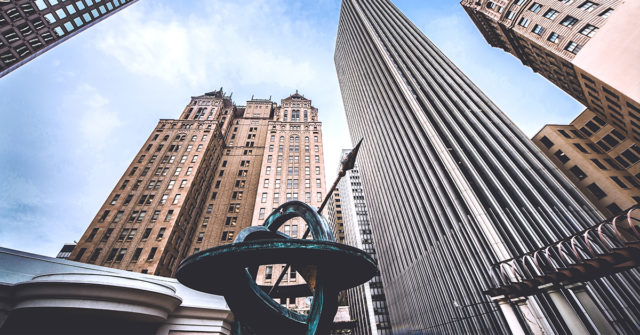In 2021 we conducted live podcast interviews with nearly 30 doers and thinkers in the crypto industry, from institutional digital asset product managers to consultants, entrepreneurs, tech and infrastructure providers and big-name analysts and journalists. Our guests came from organizations as varied as HSBC, BBVA, Deutsche Bank, State Street, FT and IBM. Here’s what we’ve learned.
Laurent Marochini, Head of Innovation at Société Générale Securities Services, offered a striking continental overview of the crypto space in September. He observed that the US is moving fast with cryptocurrency trading, asset management and funding in blockchain companies, whereas in Europe financial organizations are more interested in tokenization, stablecoins and other blockchain use cases. As for Asia, indications are mixed. “They are moving in on cryptocurrency,” said Marochini. “Of course not in China, because they banned the Bitcoin. But in China, they are moving fast with digital yuan. In the different countries, they’re doing a lot of experimentation with Central Bank Digital Currencies (CBDCs).”
Cryptocurrencies: Bitcoin, stablecoins and CBDC
Alexander Bechtel, Head of Digital Asset & Currency Strategy at Deutsche Bank, offered conceptual clarity on digital currencies when he said there were essentially three different versions: “There is digital currency without an issuer, which would be decentralized cryptocurrencies like Bitcoin. There are digital currencies issued by the private sector, such as stablecoins. And then there are digital currencies issued by the state or by central banks, which would be CBDCs.”
Many of our guests shared the view that the Bitcoin market was rapidly maturing and becoming a consideration for investment portfolios. However, there was more appetite for discussing Bitcoin’s value as a global digital reserve asset rather than a currency. Mike McGlone, Senior Commodity Strategist at Bloomberg Intelligence, was quite bullish:
“If I look at longer term trends in volatility and bitcoin, it’s going to match gold in about 2024.”
One thing everyone noticed was the skyrocketing growth in the stablecoin market. It increased by over 500% in 2020 – and this level of growth has continued over 2021. However, Kalin Nicolov, Head of Digital Currency at SICPA, sounded a note of caution. “If there is something which is a passing fad, I think that it’s stablecoins.” He said. “Once there is central bank issued digital currency, that is infinitely redeemable and the highest quality of assets, there will be no reason for stablecoins to exist.”
There were mixed views in general about CBDCs. Bechtel thought CBDCs should resist the temptation to become another digital means of payment. “I think CBDCs should try to solve problems that are not being solved by the private sector or public sector today,” he said. “I always think of mainly two things. One is we cannot pay offline digitally, that’s just not possible today. And we cannot pay anonymously digitally, currently.”
Blockchain: Efficiency play and smart contracts
Francisco Fernandez, Founder of Avaloq, offered a useful lens through which to analyze Distributed Ledger Technology (DLT) and blockchain. He distinguished between the efficiency offered by its ability to settle, move and store value and the security offered by its potential for certification and smart contracts.
Greg Kidd, co-founder of decentralized identity company GlobaliD and early investor in companies like Twitter, Square, Coinbase, Filecoin, was also impressed by the ability of blockchain and the non-custodial space to transform the value chain: “It’ll pay a lot better interest rates, because staking offers much better economic returns when you have your money invested in something that doesn’t have all the intermediaries skimming everything off.”
Digital assets: a $200 trillion opportunity
Fernandez indicated blockchain also offered a third opportunity beyond efficiency gains and smart contracts – and that was digital asset management.
“The world’s wealth is worth about $400 trillion. Almost half of that is what I call unbankable assets.”
He added, “I’m talking about to a certain extent real estate, which is the largest asset class in the world, but also art, classic cars, diamonds, IP rights and music rights. And I think blockchain and digital assets are an opportunity to take the other half of the planet, we’re talking about the $200 trillion opportunity, and make them efficient bankable assets with a price, transparency, a liquidity, and the democratization of access.”
Many of our guests agreed that digital assets offered a massive untapped opportunity. Lory Kehoe, Director of Digital Assets & Blockchain at BNY Mellon, thought the main challenge it offered the financial service industry was in terms of product development. “What are the products that we can develop around this new asset class?” he asked.
Alfonso Gomez, CEO of BBVA Switzerland, put it another way: “The traditional market captures the movement from the capital to the shares, while the crypto markets captures the movement from assets to the tokens.” There was also agreement among our guests that tokenization contributes to fractionalization. As Rajeev Tummala, Director of Digital & Data at HSBC, commented:
“The fact that you can own any assets in a tiniest form is going to be responsible for creation of asset networks.”
Blockchain certainly makes digital asset management possible, but is there the demand? Our guests offered mixed responses to this question. Thomas Nägele, of NÄGELE Attorneys at Law, reined in the optimism: He said, “It’s fantastic that you can tokenize, but if there’s no secondary liquidity, why would you tokenize? I mean, you don’t want to do it for the sake of the technology.” However, Ben Robinson, managing partner at Swiss-based strategy consultancy aperture, suggested that demographic trends point to a big shift: “Around $1.5 trillion is being passed down from baby boomers to their kids or grandkids every single year. And those kids and grandkids have very different expectations about what kinds of services they want to receive, and the channels over which they want to receive those services.”
Adoption challenges: big banks, custody, regulations and security
All our guests saw that the transition from traditional asset management to the new crypto space has created huge market volatility and institutional instability. There was a general view that things would settle down as adoption increased. But there were varying ideas about how this might happen.
Many guests thought that as the big banks and institutional investors moved into the crypto space, they would introduce common standards and accountability mechanisms. These would be stabilizing forces. But, at the same time, the banks would have to get used to new ways of working. Either way, 2021 was clearly the year in which it became clear: virtually all Tier 1 banks and financial institutions are moving into the space. As Swen Werner, Global Product Manager at State Street Digital summarized it:
“If you want to stay relevant as an organization, you have to jump on the bandwagon and develop a service. It becomes an imperative now.”
Andy Flury, CEO of AlgoTrader, pointed out that banks would have to get used to the fact that blockchain, rather than their own systems, is going to be the “master data system of record” and work together with industry participants to integrate the trade life cycle from order execution through custody to settlement. Kevin Lim, Director of Blockchain at Temasek, suggested that banks should not be afraid to invest and innovate around the DeFi space – such as “a more intuitive and transparent UI to facilitate transactions, hopefully at a low cost.” Decentralized identity entrepreneur, Gregg Kidd emphasized the importance of the three i-words: “interoperability, innovation, inclusiveness.”
Maxime de Guillebon, CEO at Zodia Custody, saw custody of digital assets as a key foundational feature for institutional custody, from which to further build digital asset business models. “We built the custody,” he said. “And now clients expect a network. They expect the ancillary services: global reporting, connectivity, lending, prime services, margin trading. To be fair, a lot of what we see is trying to get crypto assets much closer to traditional finance than trying to bring traditional finance into the crypto world.” Rehan Ahmed, Chief Product Officer at Marketnode, came from a similar angle when he talked about a “minimum viable ecosystem” involving banks, issuers, technology companies and law firms.
Regulations often came up in the talks. Some saw regulations as a potential impediment to business. “The regulators are in over their heads,” Kidd said. “They will really mess up DeFi if they think it’s just an end run to avoid all the compliance and controls that are meant for the custodial world.” Mathias Imbach, Co-founder of Sygnum, was also reserved about the impact of regulations, especially in Germany and the US, but praised regulators in Switzerland and Singapore. Peter Hofmann, CEO of Custodigit, confirmed that more progressive regulators, like in Switzerland, could foster trust in decentralized finance.
Ultimately, what Julian Sevillano, Head of Digital Assets at risk management consultancy Promontory is telling us, is that regulators must ensure that a certain level of consumer protection is in place. Therefore, institutions offering custody or trading or lending products and services, must still be able to dissect the different parts of coins and tokens they offer access to, make decisions on which token they’re comfortable to support and which ones they’re not. “How are the tokens established? What is the underlying activity? What is the governance behind it?” Nevertheless, Katharina Gehra, CEO & co-founder of Immutable Insight, argues that regulators can only do so much in terms of adding friction. These are forces beyond their control.
“You cannot forbid the internet. You cannot forbid blockchain technology. You can’t stop adoption.”
Security is another challenge for the adoption of digital assets. Peter DeMeo, Head of Digital Assets at IBM, advocates for an end-to-end approach, where technological assurance protects databases, wallets, information, business processes and private keys. Kidd took a more nuanced view. “What do blockchains look like where identity is built in at the chain level rather than thought about later on at the wallet level?” he said. “We’re asking for the first time: why don’t you start building some chains where you can’t do a transaction or hold value, unless there’s some level of verification? That doesn’t mean we know who you are. We just know that you’ve gone through a proof, and we can show the level of proof you have without having the keys to get in there.”
What’s next for crypto?
Izabella Kaminska, outgoing Editor of FT Alphaville, had one of the most startlingly frank thoughts about the development of crypto. “We’ve never been in this situation before,” she said. “Like in the global financial crisis, when we ran out of liquidity, there wasn’t an alternative pool of liquidity that you could just tap. Now there is. There is this pool of crypto. It will be interesting to see what happens if everywhere else gets tight again. Will people start liquidating the crypto or will it offer a flight to safety?”
And if there are still sceptics among any of the readers, we leave them in the hands of Mathias Imbach, CEO at Sygnum, whose spontaneous elevator pitch in favour of Bitcoin and crypto says captures it all.





